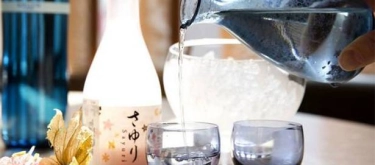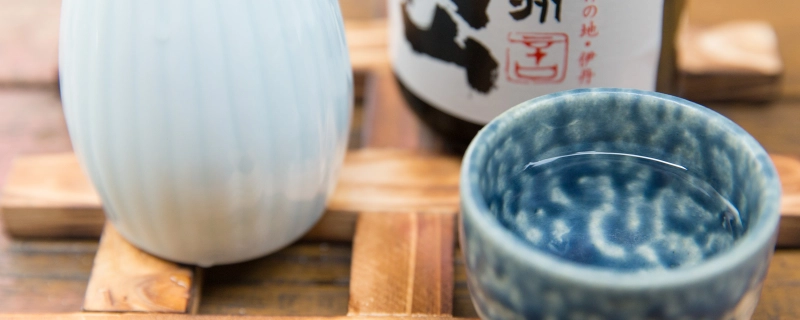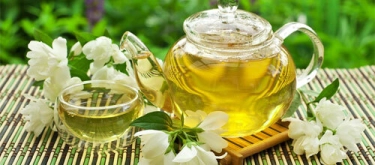Rice Wine: Taste, Uses, Benefits and Harm
Rice wine is one of the oldest and most culturally significant fermented beverages, originating in East Asia and now celebrated worldwide. Known under various names—such as sake in Japan, mijiu in China, and makgeolli in Korea—rice wine is esteemed for its refined taste, diverse styles, and culinary versatility. Whether enjoyed as a chilled beverage, used in cooking to enhance flavors, or incorporated into celebratory rituals, rice wine offers a unique window into centuries of tradition and gastronomic art.
Rice wine is an alcoholic beverage made from fermented rice and is naturally gluten-free if produced solely from rice. It is suitable for most diets except for vegetarians and vegans who avoid alcohol, and for individuals with alcohol sensitivities or certain medical conditions. Always verify production details, as some commercial varieties may include additives.

Complete Sensory Description
Taste
Rice wine typically exhibits a delicate balance between gentle sweetness and subtle acidity. The flavor can range from crisp and light in dry varieties to rich, honeyed, and almost dessert-like in sweeter or aged types. Its taste is nuanced with faint notes of rice, toasted grains, and umami, reminiscent of the natural starches and amino acids developed during fermentation.
Aroma
Fresh rice wine carries an inviting, clean aroma characterized by soft, grainy nuances and hints of tropical fruit or floral notes. The scent, primarily derived from volatile compounds like esters and terpenes, can be crisp and refreshing in light varieties or more complex and matured in aged versions, often exuding subtle hints of rice bran and fermentation.
Texture
The mouthfeel of rice wine is typically smooth and silky, sometimes slightly viscous depending on its production method. Some unfiltered variants, such as makgeolli, offer a creamy, milky texture with suspended rice particles, adding a gentle rustic charm to the overall sensory experience.
Appearance
Rice wine ranges in appearance from clear and pale yellow to slightly cloudy with a hint of amber. Filtered types, like most sake, are prized for their clarity and elegant hue, whereas unfiltered versions maintain a richer, more opaque look. The visual appeal often hints at the production method and the depth of flavor awaiting the palate.
In-depth Flavor Analysis
At the molecular level, rice wine’s flavor profile is a sophisticated interplay of sugars, organic acids, and aromatic compounds produced during fermentation. Enzymes in koji mold break down the starches in rice into fermentable sugars, primarily glucose and maltose, which yeast then converts into alcohol. This process generates a range of flavor-active compounds:
-
Sugars and Acids:
The natural sweetness comes from residual sugars, while organic acids—mainly lactic and citric acid—introduce a refreshing tartness that balances the sweetness. The dynamic balance of sugar and acid can shift with fermentation time and aging, resulting in a spectrum from dry to semi-sweet profiles. -
Amino Acids and Umami:
Free amino acids, particularly glutamic acid, contribute to an umami taste that adds depth and complexity. This savory component is reminiscent of the natural, subtle flavor of cooked rice and creates a layered, satisfying finish. -
Volatile Aromatics:
Esters, such as ethyl acetate and ethyl hexanoate, along with terpenes like limonene and linalool, develop during fermentation, imparting delicate fruity and floral notes. These compounds are sensitive to fermentation temperature and duration, influencing the intensity and character of the aroma.- Esters lend a light, fruity bouquet, enhancing freshness and brightness.
- Terpenes provide gentle citrus and floral hints, contributing to the overall aromatic complexity.
-
Aging Influence:
In aged rice wines, oxidative processes and slow maturation foster the development of richer, more rounded flavors, often introducing subtle nutty or caramelized nuances that add a luxurious quality to the beverage.
Environmental factors, such as the quality of the rice, water, and local microbial populations, further modulate these molecular interactions, leading to distinct flavor profiles among different regional varieties.
Varieties and Culinary Applications
Varieties
-
Sake (Japanese Rice Wine):
Clear, refined, and elegant. Sake is traditionally enjoyed chilled, warmed, or at room temperature and is celebrated for its clean flavor and nuanced aromatic profile. -
Mijiu (Chinese Rice Wine):
Often amber-hued and slightly sweeter, mijiu is used both as a beverage and as a cooking ingredient, imparting depth to sauces, marinades, and traditional dishes. -
Makgeolli (Korean Rice Wine):
A naturally unfiltered, milky, and slightly fizzy beverage with a sweet and tangy profile. Its rustic texture and vibrant flavor make it a popular choice for casual drinking and culinary pairings. -
Artisanal or Regional Rice Wines:
Various other rice wines, produced in different parts of Asia and beyond, offer unique regional flavors shaped by local ingredients and traditional methods.
Culinary Applications
- Beverages:
Enjoy rice wine chilled or warmed, depending on the style. Sake is typically served in small cups, while makgeolli is often enjoyed in larger bowls. - Cooking:
Rice wine is an essential ingredient in many Asian recipes. It’s used for marinating, deglazing pans, and adding depth to soups, stews, and sauces. Its mild sweetness and aromatic complexity enhance seafood, poultry, and vegetable dishes. - Pairings:
Rice wine pairs well with light, savory dishes such as sushi, sashimi, grilled fish, and steamed vegetables. It is also excellent when used in fusion cuisine to add a subtle, elegant flavor twist.
Selection and Storage
Selecting Quality Rice Wine
- Look for products with a clean, fresh aroma and clear, appealing appearance.
- For sake, ensure the bottle is properly sealed and check production or expiration dates.
- Artisanal or unfiltered types (e.g., makgeolli) should be inspected for uniformity and absence of off-odors.
Storage Recommendations
- Store unopened rice wine in a cool, dark place.
- Once opened, refrigerate and consume within a few days (for unfiltered types) or according to the producer’s guidelines to preserve delicate flavors.
- Avoid prolonged exposure to air and light, as these can degrade the essential oils and flavor compounds.

Nutritional Insights
- Rich in Amino Acids:
Rice wine contains essential amino acids, contributing to its umami flavor and potential health benefits. - Antioxidants:
Some varieties are rich in antioxidants produced during fermentation, which may help reduce oxidative stress. - Low Caloric Content:
Generally low in calories, rice wine offers a flavorful beverage option for those watching their caloric intake, though moderation is advised due to its alcohol content. - Vitamins and Minerals:
Contains trace amounts of B vitamins and minerals such as potassium, which support metabolic and cardiovascular health.
Expert Insights & Culinary Tips
- Optimal Serving Temperature:
Serve sake chilled or at room temperature to highlight its nuanced flavors; makgeolli is best served slightly cold to preserve its creamy texture and mild tang. - Culinary Pairings:
Rice wine complements a wide array of dishes—try pairing with light seafood, steamed vegetables, or even delicate pasta dishes. It’s also excellent in marinades for meats and vegetables, enhancing the overall flavor profile without overpowering natural tastes. - Cooking Techniques:
Use rice wine early in the cooking process to allow flavors to meld, or finish with a splash of rice wine to add aromatic brightness to sauces and stir-fries. - Quality Considerations:
Look for artisanal or traditional brands that specify “junmai” (pure rice sake) or “unfiltered” for a more authentic flavor profile.
Interesting and Curious Facts
- Historical Significance:
Rice wine production dates back over 2,000 years in East Asia and has played a pivotal role in cultural, religious, and social practices. - Cultural Artistry:
In Japan, sake is not just a drink but an art form, with master brewers (toji) dedicating years to perfecting their craft. - Regional Variations:
Each region produces rice wine with its own unique character—Japanese sake, Chinese mijiu, and Korean makgeolli all reflect the distinctive climate, water, and rice varieties of their regions.
Harm and Dietary Considerations
- Alcohol Content:
Rice wine contains alcohol, so consumption should be moderate, particularly for pregnant women, individuals with liver conditions, or those on certain medications. - Potential Allergens:
While rice wine is naturally gluten-free, check labels for any additional flavorings or additives that might contain allergens. - Caloric Considerations:
Although low in calories compared to other alcoholic beverages, rice wine should still be enjoyed as part of a balanced diet.
Religious Dietary Considerations
Rice wine is generally accepted across most religious dietary guidelines:
- Islam: Rice wine is considered non-halal due to its alcohol content.
- Judaism: Rice wine is permissible if produced under kosher guidelines; many kosher sake options exist.
- Hinduism & Buddhism: Generally acceptable, though some adherents may avoid alcohol altogether.
- Christianity & Other Religions: Rice wine is widely acceptable and enjoyed in various cultural contexts, with no significant restrictions.
Final Thoughts & Sensory Journey
Rice wine offers a refined, culturally rich, and complex sensory experience. Its subtle balance of sweetness, acidity, and umami, shaped by ancient fermentation techniques, provides a delicious, versatile beverage option that enhances both culinary creations and social rituals. Whether sipped on its own, paired with a delicate meal, or used as a culinary enhancer, rice wine continues to captivate with its timeless elegance and nuanced flavor.
Resources
- McGee, H. (2004). On Food and Cooking: The Science and Lore of the Kitchen. Scribner.
- USDA FoodData Central (2023). Nutritional Profiles and Safety Guidelines for Fermented Beverages.
- Food and Agriculture Organization (FAO). (2021). Traditional Fermented Beverages: Rice Wine and Global Practices.









